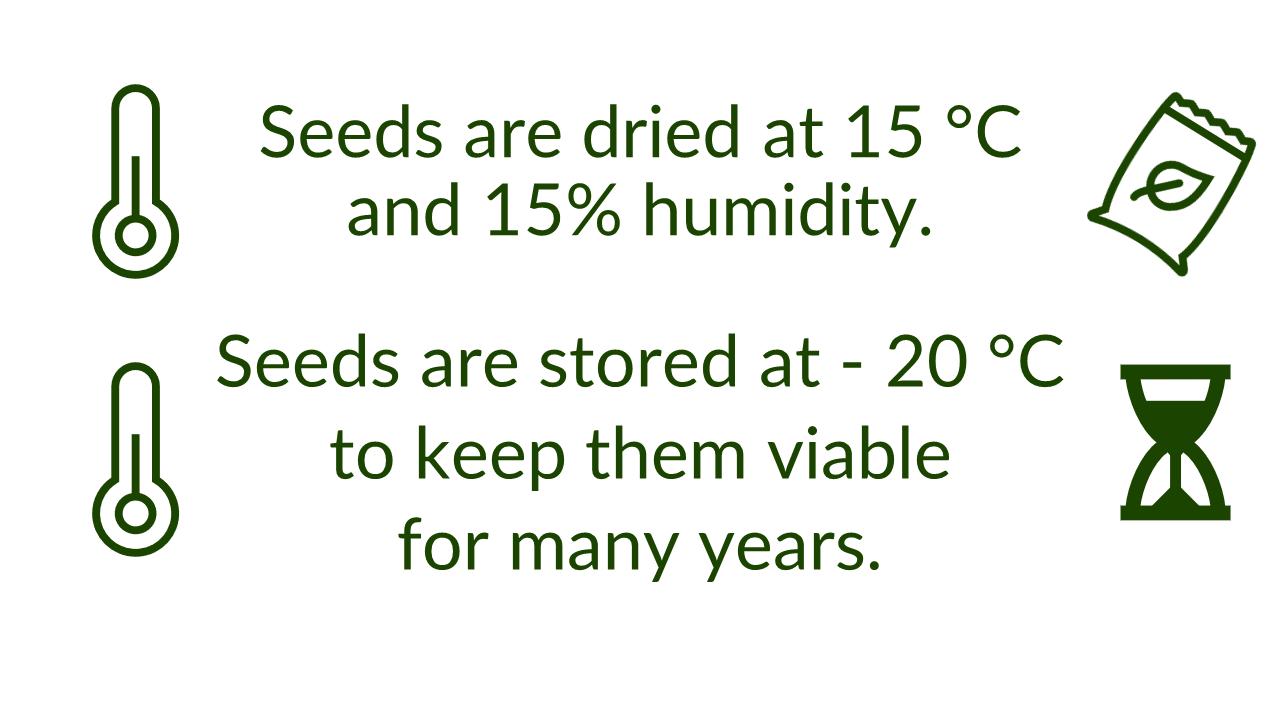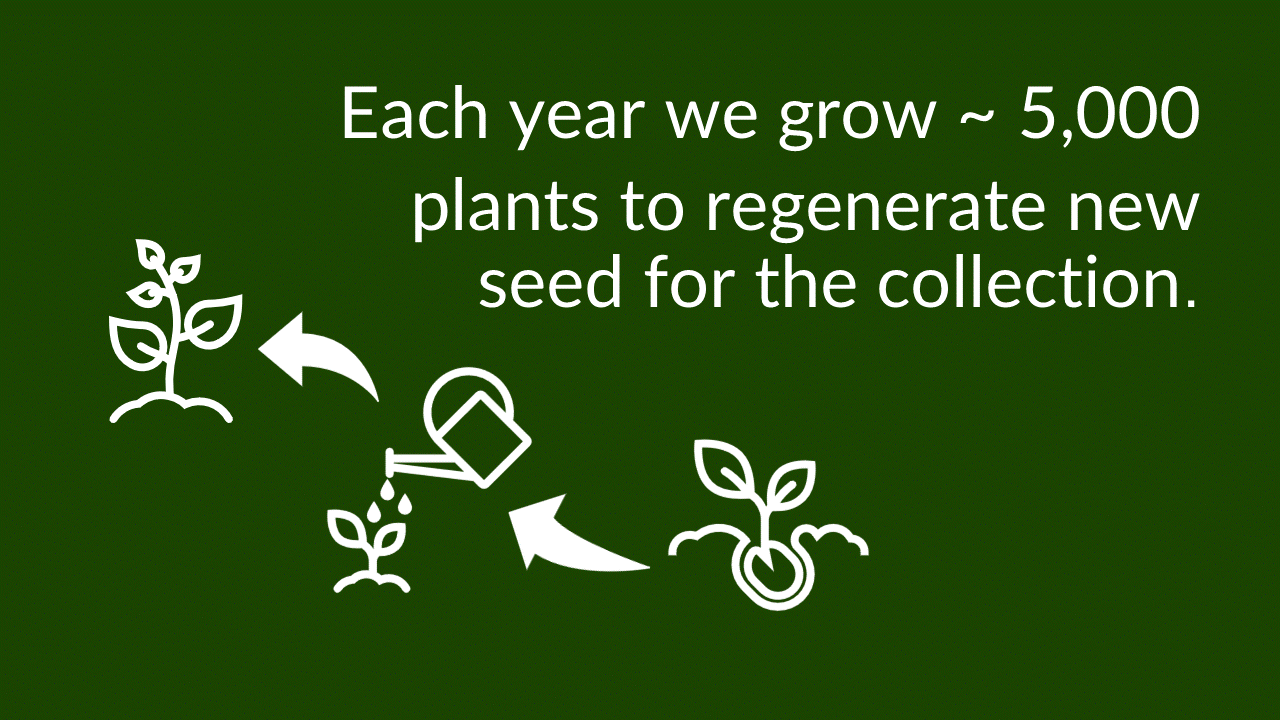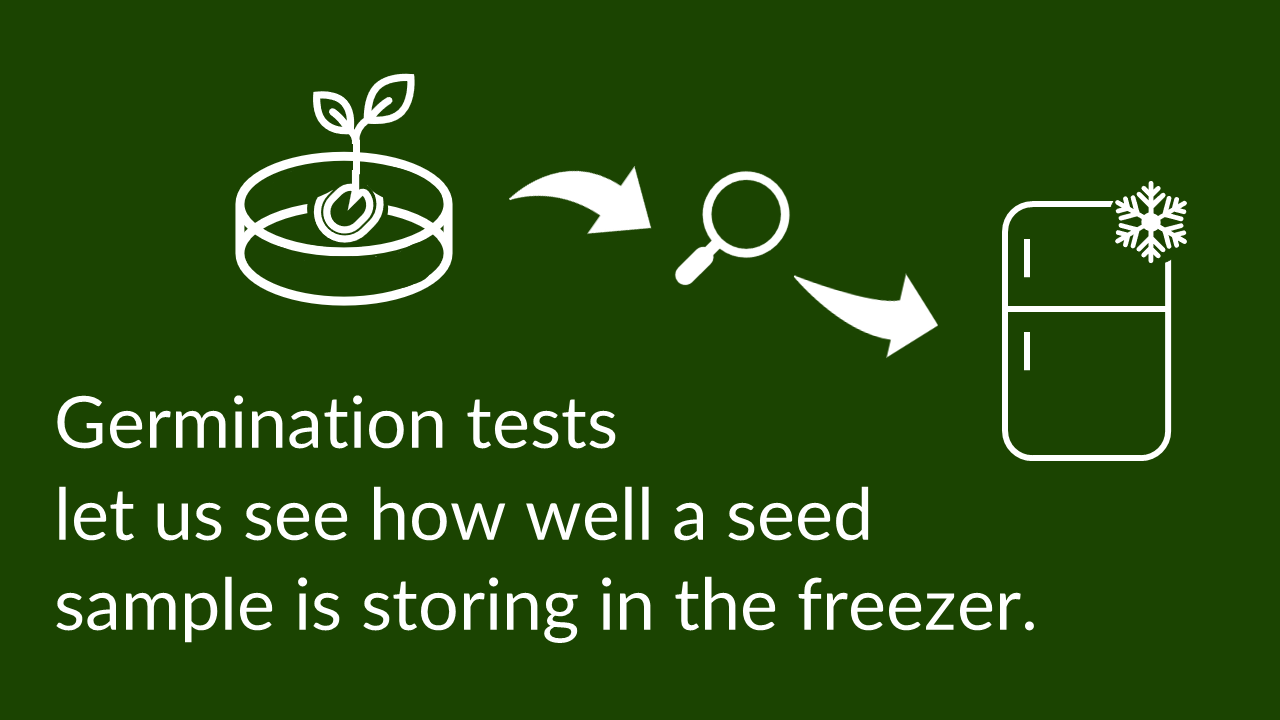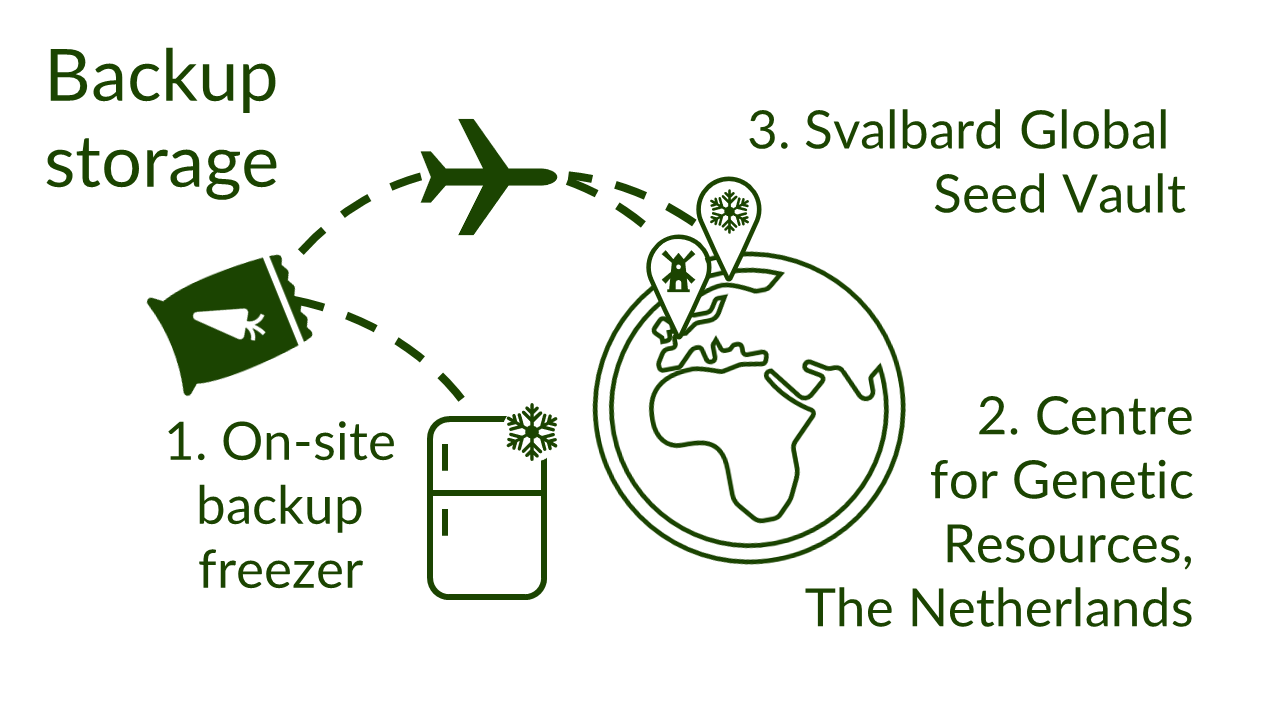Conservation and storage

Seed storage
To ensure the maximum longevity of our collections our seeds are stored at -20°C and 5% moisture content in sealed foil-laminate pouches. This follows Biodiversity International and Food and Agriculture Organisation of the UK (FAO) recommended conditions.
Our seeds are monitored periodically for viability using germination tests.





Regeneration program
Any accession (seed sample) which has low seed stock or viability is scheduled for regeneration. Regeneration is the process of growing seed out to collect fresh seed for an accession. This process resets the viability of the new seed collected, and replenishes the stock of seed available.
We regenerate from 50 plants to maintain the genetic diversity of the population. Out-pollinating vegetables are isolated from similar taxa in insect-proof compartments to prevent contamination. Pollination is carried out by flies.
The regeneration cycle normally takes a year, but we have some accessions, of crop wild relatives, which take many years to produce new seed for storage.

Back-up storage
To safeguard our collections against unexpected disasters "backups" of our seed are stored in multiple locations.
Most of our samples are duplicated at The Centre for Genetic ResourcesLink opens in a new window, The Netherlands. Some samples are also duplicated with other organisations, often as part of specific collaborative projects. We have also started a programme depositing seed samples in the Svalbard Global Seed Vault.
In February 2020 we took part in a Seed Summit and Seed Deposit Ceremony at the Svalbard Global Seed Vault.
